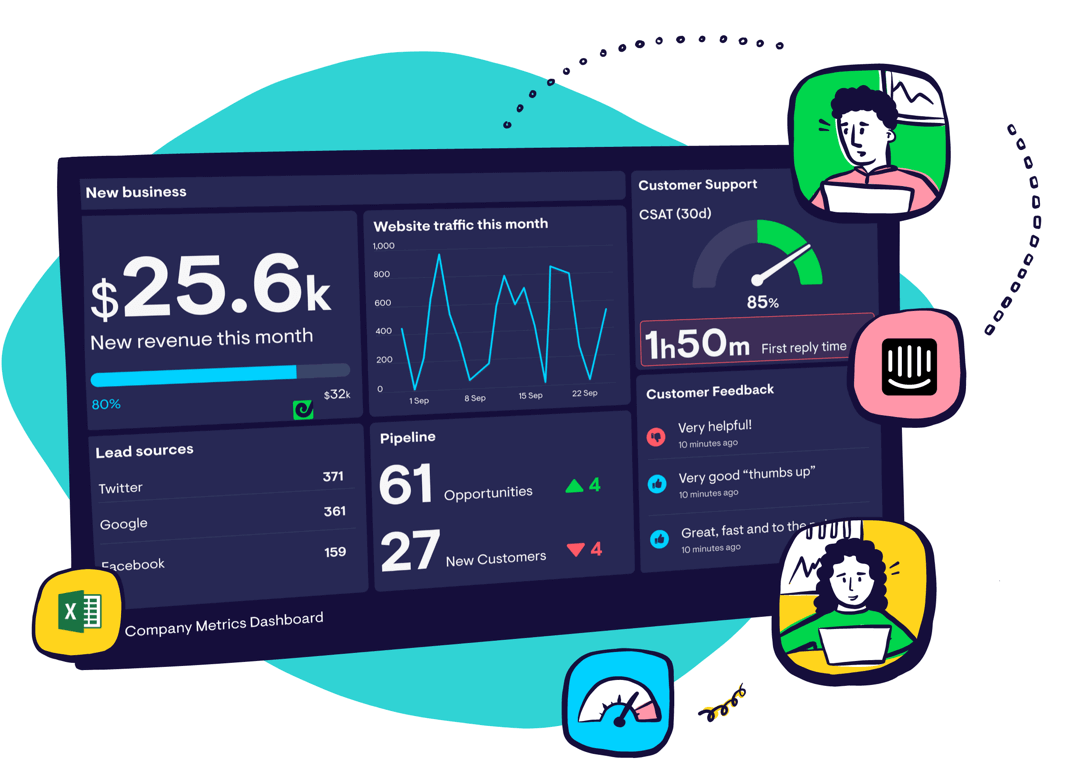Lead Response Time
What is Lead Response Time?
The sales metric Lead Response Time is the average time it takes for a sales rep to follow-up with a lead after self-identifying as a lead (submitting a form, downloading an ebook, etc.). This is more meaningful if you calculate the average time it takes to follow-up on a lead segmented by lead source since the warmer a lead is the more important it is to follow-up quickly. For example, someone requesting a demo of software is warmer than someone who simply downloaded a whitepaper.
How to calculate Lead Response Time:
Step 1:
Time/date of new contact - time/date of follow up = (#) of min/hrs/days to respond
Step 2:
Sum of (#) min/hrs/day to respond for all contacts / (#) contacts = Avg (#) of min/hrs/days to respond
Pros:
The company that responds to a lead first dramatically increases their chances of winning the deal. According to InsideSales, “50% of buyers choose the vendor that responds first.” The report cites 2007 data from Dr. James Oldroyd which found “the odds of the lead entering the sales process, or becoming qualified, are 21 times greater when contacted within five minutes versus 30 minutes after the lead was submitted.”
Showing respect, urgency and importance to the prospect increases your chances of winning the deal. Keeping on top of this sales metric ensures you are giving yourself the best opportunity of converting leads.
Cons:
Treating all leads equally for lead response time makes the metric less valuable. For example, someone who downloads a whitepaper doesn’t necessarily expect an immediate response, while someone who has booked a demo or contacted you through a contact sales form will likely expect a much quicker lead response time. This means you need to segment leads and define separate service level agreements (SLAs) with your sales team based on what source the lead has come from. Essentially, the higher the lead score the more urgent it is to respond to the lead. It’s also important to look at the number of follow-up attempts made to contact a prospect, because it’s unlikely that you will reach a prospect at the first attempt, so just looking at the first response attempt can be misleading. Focus on the number of follow-up attempts to respond to a lead. Also, consider the communications method as email is likely to be less effective than a phone call. An alternate perspective suggests focusing on the quality of conversation instead of how quickly you can contact the lead.
Relevant Sales Metrics and KPIs:
If you’re adding Lead Response Time to your sales KPI dashboard, you might want to also consider tracking these related sales metrics for context.
- (#) of Follow-up Attempts
- Average (#) of Follow-up Attempts for leads that convert
- Average Sales Cycle Length (#) days/weeks/months
Industry Benchmarks
There are a lot of benchmarks on this, and lead response times vary largely based on company size, industry and lead type as we’ve mentioned. According to InsideSales.com, the benchmark for American businesses to compare themselves to “the rest” for first phone response to a Web lead submission is about 3 hours. About half of companies that responded by phone are responding in less than 3 hours.
They also found that lead response time varies massively based on industry. For example, Healthcare was the slowest with an average lead response time of 2 hours and 5 minutes, meanwhile telecommunications performed best with an average response time of 16 minutes, which is much closer to the optimum 5 minute response time. Also, smaller companies tend to respond quicker as smaller companies (1-300 employees) respond in 48 minutes on average, whilst the largest companies 2501+ employees take 1 hour 28 minutes. Source
| Industry / Company Size | Avg Response to Web Lead Submission (ideal: 5 min) |
|---|---|
| Healthcare | 2 hours and 5 minutes |
| Telecommunications | 16 minutes |
| Small companies (1-300 employees) | 48 minutes |
| Large companies (2501+ employees) | 1 hour and 28 minutes |
Additional Notes:
Average Lead Response Time - Sales Data from Hubspot
